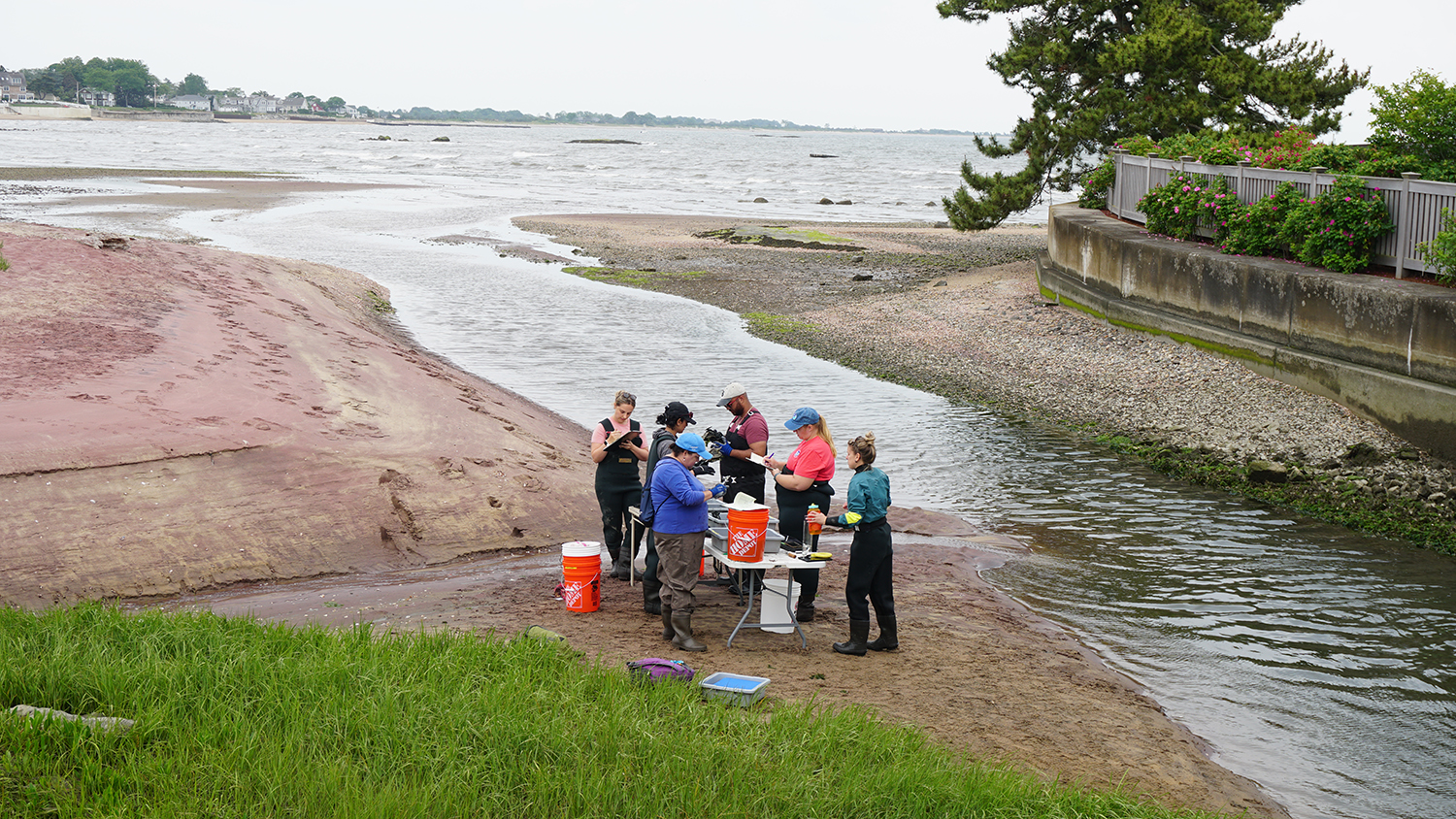Understanding the Health Of Long Island Sound’s Oyster Beds

Expanding natural oyster populations can benefit people and the environment. However, scientists do not know how unmanaged oyster populations affect the spread of oyster disease in Long Island Sound. To gain a better understanding, the Long Island Sound Study Management Committee in 2022 provided $1.27 million to the NOAA Milford Lab to collect baseline data for an assessment of disease dynamics of natural and restored oyster beds in Long Island Sound. Working with local partners, NOAA is taking a comprehensive look at oyster population health in natural and restored oyster populations.
NOAA is assessing the health of oysters at four sites monthly over multiple years. Two sites are in Connecticut, one at Ash Creek in Fairfield, and the other at Fence Creek in Madison. The other two sites are on the north shore of Long Island at Cold Spring Harbor and Huntington Harbor.
To learn more about the project, which is being led by Meghana P. Parikh, a veterinarian focused on animal production health, and Katie McFarland, a shellfish biologist, visit the NOAA website. Also, check out a blog post from Mariah Kachmar, a shellfish health and disease technician at the NOAA Milford Lab, who is on the project research team.